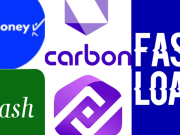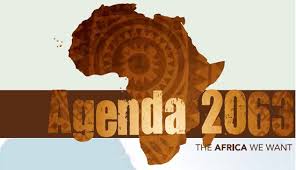Africa has entered a decisive era where ambition must translate into action. The continent’s long-term blueprint, Agenda 2063, envisions a future of prosperity, integration, and resilience—but its success now hinges not on planning, but on execution. Across the continent, national development strategies are increasingly aligning with the Sustainable Development Goals and regional industrial ambitions, creating a powerful convergence of vision and opportunity. The challenge today is no longer articulating goals, but converting them into finance-ready projects that create jobs, strengthen industries, and deliver essential services where people live.
At the heart of this shift stands the African Development Bank (AfDB), now reinvigorated under the leadership of Dr. Sidi Ould Tah, who was elected as the Bank’s ninth President in May 2025. In his inaugural address on September 1, 2025, Dr. Tah laid out four strategic priorities: listening to member states, accelerating reforms, deepening partnerships, and turning plans into operational assets. These guiding principles are shaping the AfDB’s renewed focus on delivery—and on making Africa development agenda 2063 a tangible reality.
Backed by a strengthened financial foundation—including a general callable capital increase raising authorised capital to approximately $318 billion and a $750 million sustainable hybrid capital instrument—the Bank is expanding its lending capacity and flexibility. This enhanced mandate enables faster disbursement, greater risk absorption, and deeper support for both public and private sector initiatives across infrastructure, energy, and human development.
The urgency of this moment cannot be overstated. According to the IMF’s April 2025 Regional Economic Outlook, Sub-Saharan Africa is projected to grow by 3.8% in 2025 and 4.2% in 2026—contingent on resolving persistent energy and logistics bottlenecks and sustaining fiscal reforms. Yet, in many low-income countries, interest payments consume over 11% of government revenues, severely limiting space for investment in education, healthcare, and job creation. The 2024 Sustainable Development Goals Report reveals that only 17% of global targets are on track, with more than a third stalled or regressing—a reality that translates into clinics without medicines, schools without teachers, and entrepreneurs without access to capital.
To close this gap, execution and reform must advance together. The AfDB’s 2024 Annual Report shows promising momentum: project approvals rose 5.5% to UA 8.47 billion (approximately $10 billion), while disbursements hit a four-year high of UA 5.09 billion. Nearly half of approved funds supported sovereign operations, while private-sector financing reached UA 1.65 billion. By July 2024, nearly 70% of private-sector operations met the Bank’s governance and management benchmarks—exceeding mid-term targets and reinforcing institutional credibility. This performance builds investor confidence, reduces transaction costs, and accelerates project readiness at scale.
Energy remains one of the most critical tests of progress. Over 600 million Africans still lack access to electricity. The AfDB’s Mission 300 initiative—aimed at connecting 300 million people by 2030—is already delivering results. Through grid expansion, mini-grids, and off-grid solutions, the Bank is turning abstract targets into real-world impact. In rural Niger, solar-powered mini-grids are keeping vaccines cold and enabling safe nighttime deliveries by midwives—proving that reliable power saves lives.
Trade and productive integration offer another key frontier. Full implementation of the African Continental Free Trade Area (AfCFTA) could lift 30 million people out of extreme poverty and raise incomes by 7% by 2035, according to the World Bank. The AfDB is helping make this vision real through transport corridors that reduce clearance times and lower logistics costs. At the Kazungula Bridge linking Botswana and Zambia, crossing times have dropped from days to hours, empowering small traders to double their trips and manufacturers to meet just-in-time supply chains. In Ethiopia’s Hawassa Industrial Park, reliable power and serviced land have attracted foreign investors and created thousands of jobs—demonstrating what works when the fundamentals are in place.
Morocco offers a compelling model of how national strategy can align with continental ambition. Its automotive industry—built on special economic zones, supplier ecosystems, and rising local content requirements—has turned the country into a regional manufacturing hub under Agenda 2063’s industrialization pillar. Today, China’s Gotion is investing $1.3 billion in a battery gigafactory in Kenitra, Stellantis is expanding its plant to produce 535,000 vehicles annually, and auto exports reached $14 billion in 2023. This disciplined execution shows how national policies can fuel broader African integration.
The AfDB’s growing pipeline reflects this results-driven approach—prioritizing country-led demand, accelerating reforms, and emphasizing practical, scalable solutions. Dedicated instruments like the Climate Action Window, which mobilized $429 million in its first year, and AFAWA, which channels finance to women-owned businesses, are directing capital toward inclusion and resilience. One Nairobi-based entrepreneur used an AFAWA-backed loan to expand her food-processing business—now employing 25 women from her community. Thousands of such stories underscore how capital, when well-deployed, transforms lives.
But finance alone is not enough. Lasting progress depends on governance: transparent procurement, open beneficial ownership registries, and predictable legal frameworks. Only then can concessional funding act as a catalyst—mobilizing private capital rather than displacing it.
Demography remains Africa’s quiet advantage. The UN projects the working-age population will grow by nearly 400 million by 2050. Capturing this dividend requires aligning education and skills with market needs, strengthening health systems, and building infrastructure that creates pathways to employment and entrepreneurship.
The risk today is not overreach—but underreach. Thin ambition would leave Africa with inspiring visions and lagging projects. The opportunity lies in disciplined scale: transforming strategies into bankable pipelines, expanding catalytic tools, and measuring success not by announcements, but by access to electricity, productivity gains, and export growth.
In the end, Africa’s future will be judged not by the eloquence of its frameworks, but by the bridges built, the clinics powered, the businesses scaled, and the farmers connected to markets. With capital deployed, instruments active, and urgency grounded in data, the time has come to move beyond aspiration.
This is how Africa development agenda 2063 becomes more than a plan—it becomes a lived reality.
Follow us on Instagram.
https://www.instagram.com/businessnewsng?igsh=ZXpweTdjOGF1ZXdu

























